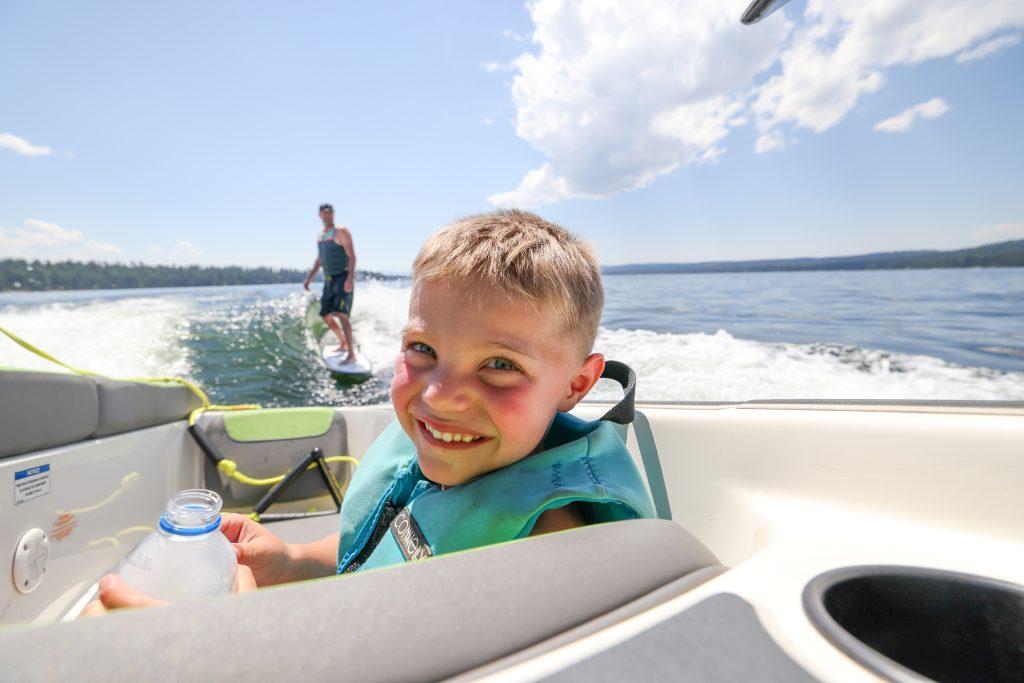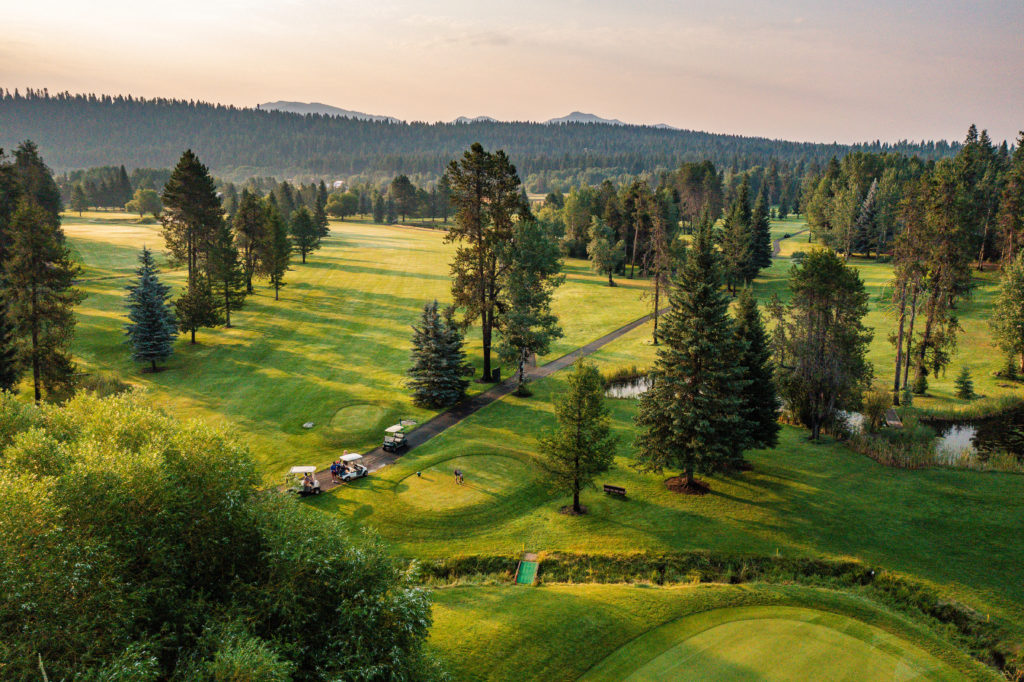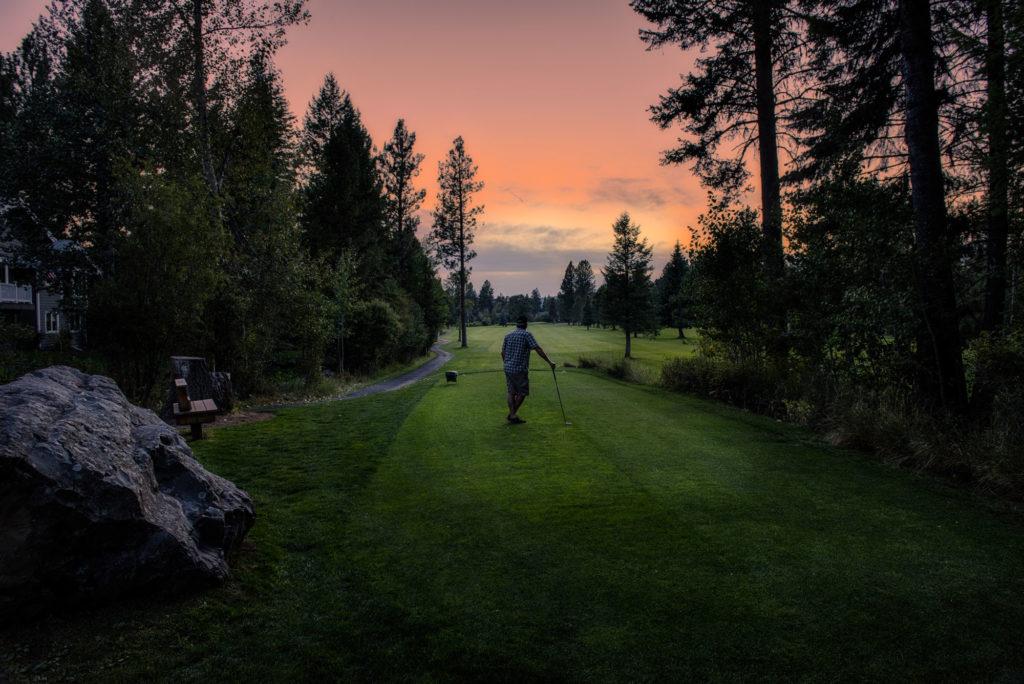New Offerings and High-Altitude Expertise Elevate the Local Golf Scene
By April Thomas Whitney
One of the great joys of living in a mountain environment – or frequently spending time in one – is anticipating the transition between seasons and savoring what each new season brings. While nature ultimately sets the agenda for these recurrent shifts, when it comes to reawakening high-elevation golf courses from their winter slumber, human intervention – and expertise – is crucial.
Turfgrass science (yes, it’s a thing) comes into play on all of our local courses every year, but this season, the particular challenges of overwintering take on extra importance, as a brand-new Par 3 course opens at Jug Mountain Ranch and the celebrated Osprey Meadows Golf Course is fully resurrected at Tamarack Resort. View all McCall golf courses
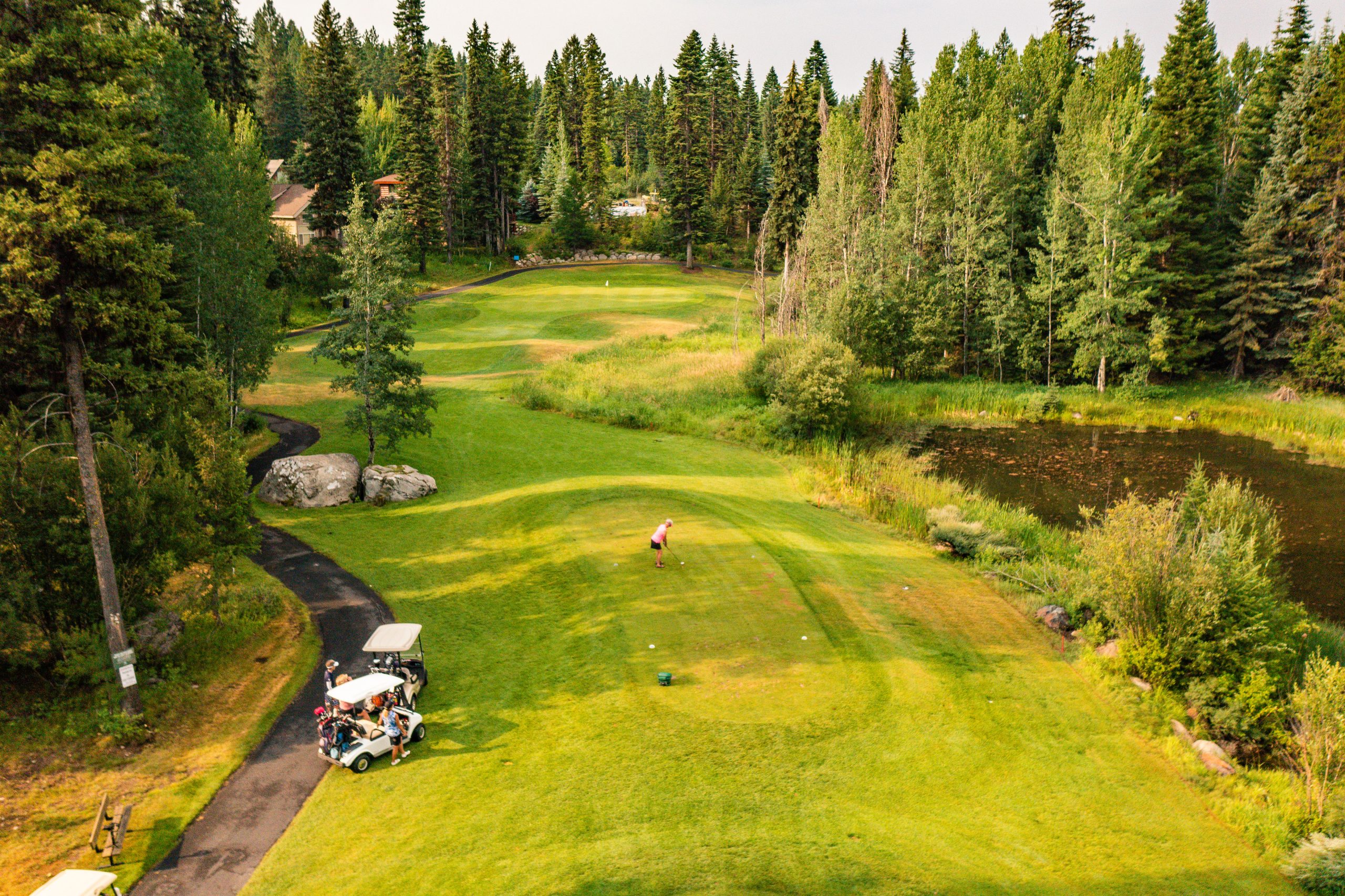
Waking Up from Winter
Whether a mountain course is newly built or long established, maintenance through the changing seasons requires a combination of art and science. It would be natural to assume that a mild winter would make it easier to prep the courses for late spring and summer use, but in fact, the opposite is true.
“A perfect winter would be where we get a good frost where the turf hardens off and isn’t growing and then we need a foot or two of snow, no rain and no warmups,” says long-time McCall Golf Course Director and Superintendent, Eric McCormick. “Normally, the snow will insulate the ground and keep it from freezing, so if we do get a rain event, it can percolate on down through the snow layer and into the ground.”
But – if the snow isn’t deep enough or if it melts off repeatedly during the winter, that same rain event can be an absolute disaster. Instead of seeping through the turf into the ground below, an ice layer will begin to form and thicken. If the ice stays too long – more than about 40 days – the turf starts to suffocate and die.
Maintenance teams don’t wait until spring to learn the fate of their turf. They dig test holes throughout the winter to see – and smell – what they’re dealing with.
“Normally, when it’s dead, it really smells bad,” says McCormick. “There’s a smell to dead turf that you can’t get out of your nose.”
“It’s just…wrong,” says Jug Mountain Ranch Pro, Dustin Ames. “Think of hot compost in the summertime, you can’t escape it.” When one local course gets a whiff of ‘the stench’, everyone goes on alert.
“Once one person starts looking, everybody starts looking,” says Ames. “You’re digging through the snow to get down to the grass and see if there’s ice and what kind of ice there is and if there’s a smell to it or not.”
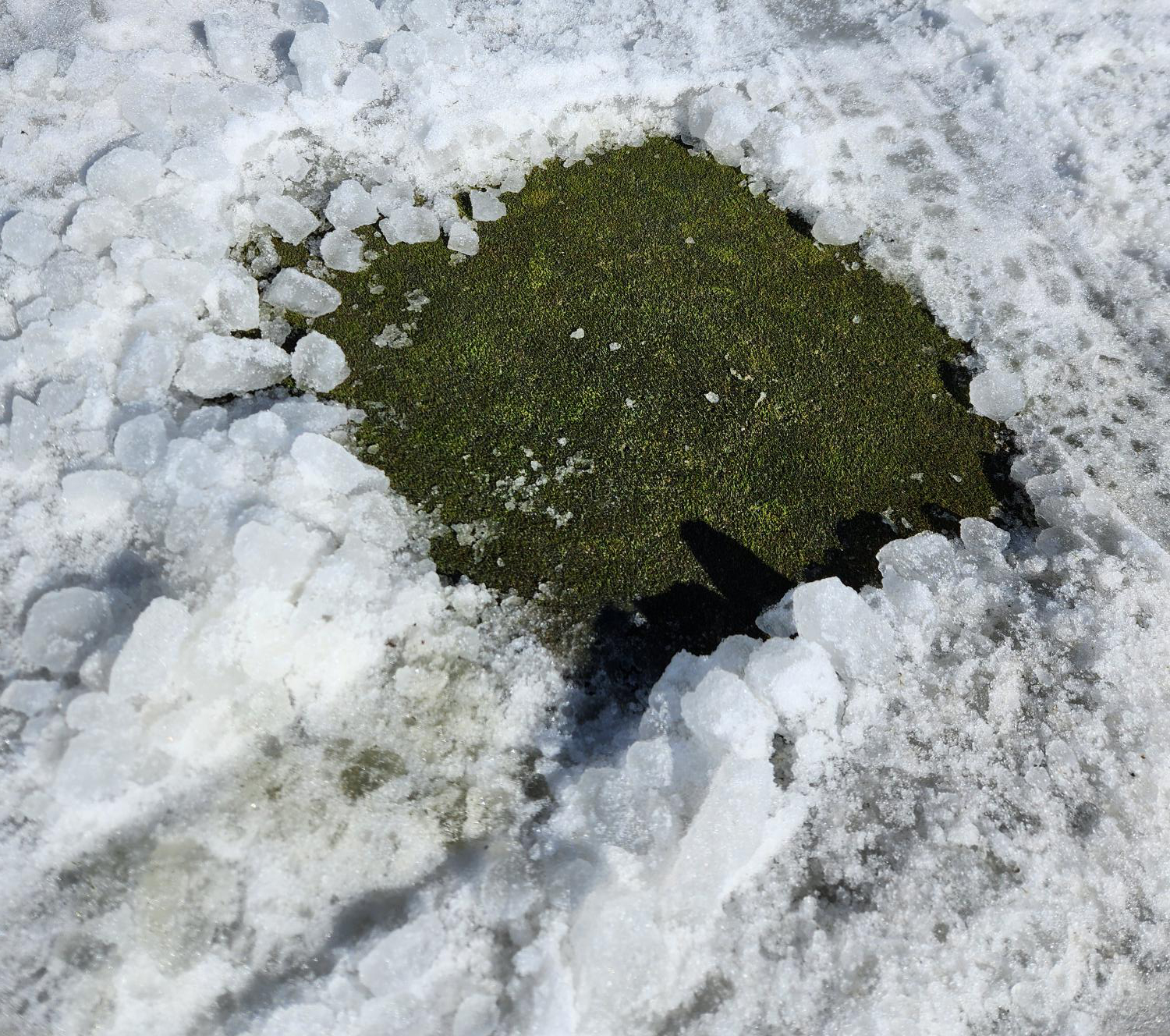
“Clear ice is really bad. Clear ice is hard and nothing goes through it,” says McCormick. “If it’s cloudy, then that means the ice is somewhat porous and the gas exchange has been happening that’s been trying to bubble up through it.”
If a solid ice layer persists for too long, it begins to choke off the turf. That means maintenance teams are constantly monitoring conditions and looking for breaks in the weather in case they need to free the turf and let it breathe.
“We used to go out and blow off all the greens and then come back and try to melt the ice,” says McCormick. “And we’ve discovered if you blow a green off, the ice is soft right then. When the sun is out, you can peel it off fairly easily. But if you leave it sitting while you blow off all the other greens, then the sun just blazes it and it becomes clear ice and it becomes harder to remove and also more damaging.”
Ice damage is the most labor-intensive problem that reveals itself in the Spring. That’s why winter maintenance starts way back in the fall, with treatments to prevent snow mold and protect from the worst of the ice problems.
“We usually spray a fungicide on the greens and tees, and then we have a couple of greens that are north-sloping and in the shade that are notorious for ice problems. We cover those greens with a black mesh Enkamat, and that has really helped us with the ice, too,” says McCormick.
Sharing information – and even equipment – is a hallmark of our local golf scene.
“If any golf course up here needs a piece of equipment for any reason, any one of us would loan somebody anything,” says Ames.
At the McCall course, prepping for winter takes extra steps because the course is right in town. The cart paths are maintained for public access for walkers, leashed dogs – and inevitably used by other outdoor adventurers.
“After we get the covers down, we stake and rope off all the greens because if the cross-country skiers make tracks over the greens, we have an ice layer there. We also put up some fence around the two greens right by the clubhouse because the kid’s tubing area is right next to there. Then we have to keep checking those stakes and ropes all winter because the deer knock them down,” adds McCormick.
McCormick has been at the McCall Golf Course for 18 years now, and his track record for maintaining and improving the course has earned him the undisputed respect of course managers across our area. McCormick tells us that he will be retiring after this summer. He’ll spend his final season passing on years of accumulated knowledge and techniques to his new assistant. That’s an ideal way to pass the torch, because not all golf course personnel have experience with ice, or with irrigation systems that need to be depressurized and repressurized every year.
“There are certain ways that we can charge it up. There are certain ways that we drain it,” says McCormick. “And sometimes there’s obviously multiple ways to do things. But I’ve seen people blow up pipes if they don’t do it carefully.”
McCormick will also get the chance to wrap up a few key projects before he retires.
Last year, the McCall Golf Course maintenance team removed railroad ties and rebuilt tee boxes with a lower profile and sloped grass around all the edges. They’re now more accessible to those with mobility challenges, and easier to mow around and maintain.
The rebuilt tee boxes now have four sets of tees (blue/white/silver/gold) to help individuals with a wider range of skills choose to make their round more or less challenging.
The last of the tee boxes will be rebuilt this year, but the most noticeable improvements for 2024 will be centered around the clubhouse, which is getting a new staircase and improved ramp at the front entrance.
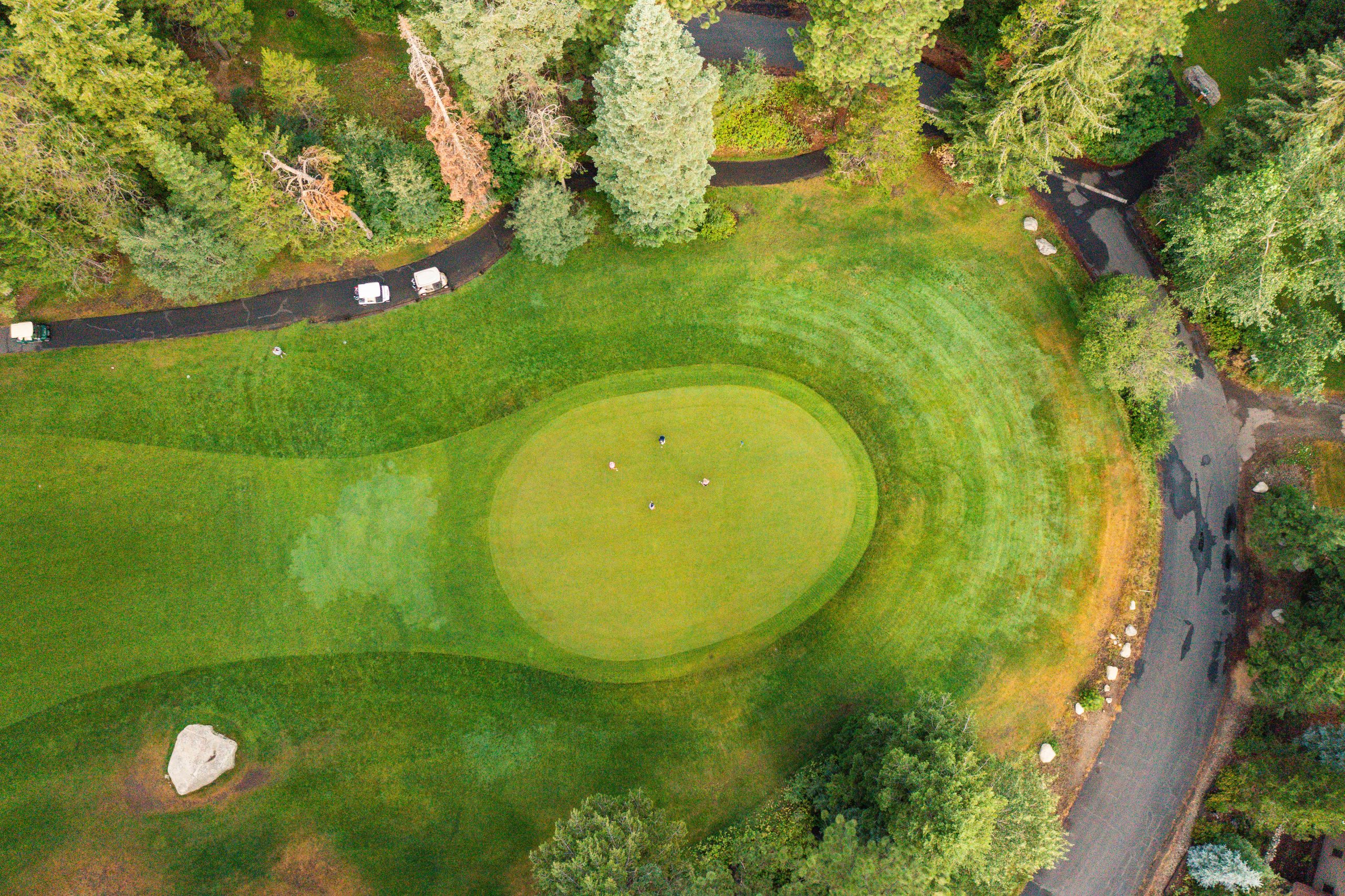
While Eric enjoys the sport of golf, the passion he’s brought to his work in McCall for nearly two decades is driven more by his love of growing turf than growing his skills with a club.
“There are two kinds of people who do these jobs. One type is the people who love golf, they are good golfers and they got into the business because of golf,” says McCormick. “And I golf because of being in the business. Coming from agriculture, I’m more of a grower. I like to maintain the product and make it work, so I play golf because of that.”
Another ag-based authority in the local golf scene is Kirk Kundrick. Kundrick has worked as superintendent at the MeadowCreek Golf Course in Meadows Valley since 2011. Prior to settling down in our area and focusing on course maintenance, Kundrick’s work centered around course construction. Building golf courses start to finish gave him a special appreciation for the bones of a course, the parts that can’t be changed.
“When I first toured this course, I noted the beauty around Meadow Creek and the routing, which is the placement of the golf holes in their relationship to each other,” says Kundrick. “The holes at Meadow Creek are individually placed and laid out farther away from the nearby holes, so the infrastructure is good and here to improve on.”
While the holes are well spaced, the fairways are narrow, which makes the course challenging.
“Golf is a challenging game and a lot of people need to feel like they’re good at things to enjoy them. If you have a frustrating experience, you lose a bunch of golf balls, and your score’s high, it’s not as fun,” says Kundrick.
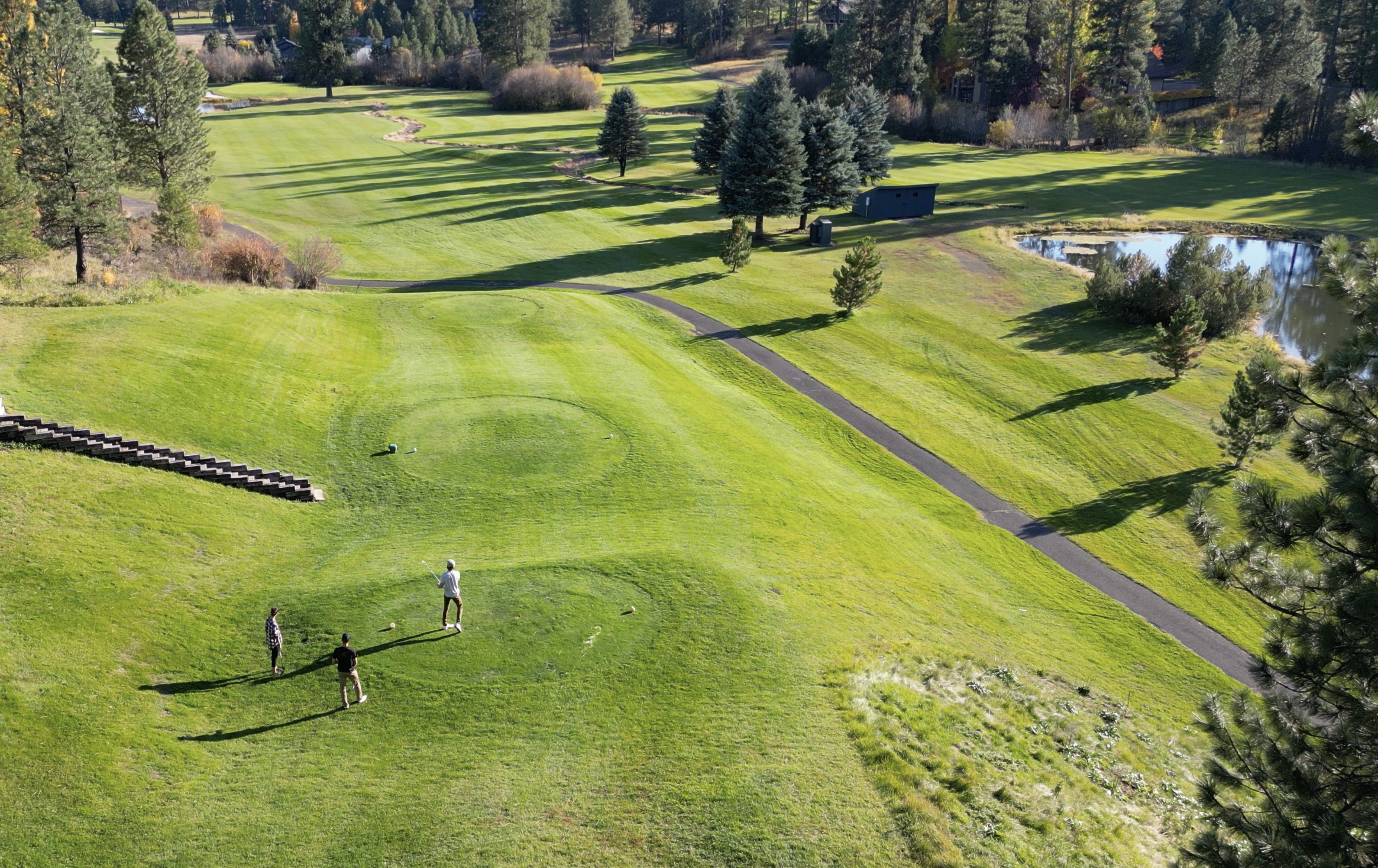
That’s why Kendrick is always looking for little ways to make the course more playable for a wider range of golfers, like limbing up trees to make it easier to hit out of the rough.
Making sure the course is enjoyable from Day 1 of each season is a priority for Kendrick. High-elevation golf courses have a short window of operation. Fewer months open means fewer chances for golfers to play and less time for the courses to cover their expenses. That’s where Kendrick’s decades of experience help keep the big picture in perspective.
“Say we open a week early. If you only get a week of growing weather on the greens and they’re spotty and they’re bumpy, well, people drive up from Boise and they play bumpy, slow greens,” he says. “And they go back and say, you know what? That place was a dump. I wouldn’t go back there. But a week later, you come back and play, it’s a big difference.”
And while the snow melts off sooner at MeadowCreek’s elevation, being 1,000 feet lower isn’t always an advantage.
“It really isn’t any easier because you still have snow cover from November to April. And sometimes we get more rain events, which contribute to the ice buildup more than snow does,” says Kundrick. “And we may be four weeks ahead of Long Valley when in comes to spring snowmelt, but the soil temperature doesn’t really hit until Memorial Day, so we don’t really get a head start on growing seed before we open.”
Seed Versus Sod
The short growing – and operating – season makes it extra challenging to repair winter damage. Grass seed is much more affordable and easier to source than sod, but it can only be used when temperatures – and timelines – allow.
After a particularly mild winter in 2012, the wrong kind of ice built up at Jug Mountain Ranch. “You could have gone ice skating on hole #6, that’s how much ice we had on the fairway,” says Ames. “I think we spent $120,000 just to seed it alone.”
While they normally shoot for a Memorial Day opening, that year, Jug Mountain Ranch couldn’t open until June 15. In that situation, sod was not an option. Not just because of the expense. At that time, the vast quantity of the type of sod they needed simply wasn’t available.
Plotting the Course for Six New Holes at “Jug Junior”

Fortunately, when Jug Mountain Ranch started work on its newest offering, a six-hole Par 3 course, they designed grow time into the planning process. Ames says 95% of the new turf was grown from seed, with sod used strategically on just 5% of the course, mostly in sloped areas around the perimeter of the greens.
“When you’re growing greens in, the seed has to stay wet. So you’re watering it probably four times as much as you are a regular fairway that’s been seeded, and having a ring of sod around the edge keeps the seed where it’s supposed to be,” explains Ames.
Construction on Jug Junior started in 2022, with multiple big bulldozers and excavators removing dirt from pastureland, stacking the fertile topsoil to the side, contouring the lower layers, then moving the topsoil back in. They used the same seed as Jug’s original 18-hole course, so the two courses will match aesthetically and functionally.
The addition of a Par 3 course at Jug is extra exciting for Ames because it offers great options for coaching young and beginner golfers in a logical and effective learning progression.
“Most beginners get focused on trying to hit the ball as hard as they can to make it go far down a regular fairway,” says Ames. “With the Par 3 course, we’ll be able to use multiple clubs in their bags and teach them how to play from 100, 130 yards to focus on a wider range of skills.”
As Jug Mountain Ranch owner David Carey points out, you don’t need to be a beginner to enjoy a shorter, less intimidating course.
“Young or old, pro or newbie, Par 3 courses are fun,” says Carey. “We already had an excellent practice facility with a large driving range and putting and chipping greens, so this Par 3 course truly rounds out the low-pressure practice experience in an affordable way everyone can enjoy.”
The setting of the new Par 3 course is no less spectacular than the original course, which opened in 2004 after years of careful planning. The course was designed by Don Knott, former Senior VP of course design for Robert Trent Jones Jr, with particular emphasis put on blending the course in with the natural environment around it.
“Over the years, Don and my father worked closely walking the ranch to cherry pick some of the most interesting parts of the property,” says Carey. “They were spoiled for choice and did an amazing job of playing with views, native creeks, large established reservoirs, dry sage brush pasture and heavily treed areas. It is a very natural course that reflects some of the best landscapes in Valley County.”
And – it’s a pleasure to play.
“Jug Mountain Ranch is a true championship golf course, with six holes in the meadow, six holes in the trees, and six holes in water. It has a modern design with an unmatched mountain backdrop,” adds Ames. “We give a country club service at a resort that’s open to the public.”
Osprey Meadows Rises Again

It’s hard to resist comparing Tamarack’s Osprey Meadows golf course to the mythical Phoenix, which is often depicted as a beautiful and majestic creature that obtains new life by rising from the ashes of its fire ravaged predecessor.
Osprey Meadows opened to acclaim in 2005, quickly garnering accolades and awards from GOLF Magazine (Top 10 New Courses, Top 100 Courses), Golf Digest (#1 Public Course in the U.S.) and Golfweek (Top 100 Resort Courses).
After operating for ten years through Tamarack’s early financial struggles, the course eventually shut down in 2015 and was essentially returned to nature. Signs of resurrection came in 2021 when MMG Equity Partners took full ownership of the resort and negotiated a deal to re-acquire the dormant course.
Tamarack engaged architects from the firm that designed the original course, Robert Trent Jones, Jr, to lead the restoration. This summer, golfers will get the chance to play the entire re-designed 18-hole course, plus an additional “Gambler’s Hole” that sits near the clubhouse, driving range, and expansive putting green.
The restoration allowed Tamarack to improve on the already-exceptional course by making a few adjustments to make it more player-friendly.
“We moved bunkers around on the new design to make sure there’s a more open path to the green,” says Dustin Simmons, Director of Golf at Tamarack Resort. “With the original course, really good players would want to come back and play it again. With the new design, people with a broader range of golf abilities are also going to find it fun and want to play it multiple times.”
They also made playability changes to the former 18th hole (now the 16th hole) which was known for its difficulty. They moved the green down to the island and pushed the tees back. It still plays as a Par 5, but with only one forced carry.
Bringing the course back from the ashes was no small feat. Deconstruction work began in 2022. Dead grass was removed from 15 of the original holes, and all the dirt below was thoroughly tilled. Sand was dug out from the bunkers and set aside so it could be reused after the course was recontoured. Three brand new holes on the north half of the meadow side of the course were built from scratch – designed for both playability and to blend seamlessly with the surrounding landscape.
In addition to making Osprey Meadows more playable, the rebuild also presented an opportunity to make the course more maintainable…and sustainable.
“Reducing the overall acreage of the bunkers means the maintenance team will spend less time raking them out. A lot of the original tee boxes were narrowed, so they are essentially one width of the sprayer, so we don’t have to go through one and a half passes. We can just do one,” says Tamarack’s Director of Agronomy, Sean Parsons. “Throughout the year, with bentgrass greens and bentgrass tees and the way we have it set up, fungicide, herbicide, insecticide use will be at a minimum.”

Carefully considering which treatments are used on the course is a top priority for Parsons’ team, especially with the waters of Lake Cascade nearby.
“The way we use water is very responsible,” says Parsons. “We log everything we do and make sure we’re only using what we need. We also create a lot of habitat for wildlife; especially small animals and birds.”
Osprey Meadows has invited Audubon International to visit the course this summer, to prepare a plan that will allow the course to work toward certification as an Audubon Cooperative Sanctuary.
Dialing in the best products and practices can take years of trial and error. Fortunately, Parsons, a recent addition to the Tamarack crew, has more than a decade of experience at an even higher “level”.
“The last course I worked on, we were at 8,000 elevation there,” says Parsons. “So what I brought here is a lot of winter injury knowledge and experience with how to prep for the winter and also how to wake the course up in the spring. All the tools and techniques that have grown grass at 8,000 feet work really well here at 5,000 feet. So everything from timing of fertilizers, to irrigation, and all the other stuff that we have to do.”
That knowledge will help prepare Osprey Meadows for its grand opening on July 27, and prepare it to withstand the annual freeze/thaw cycles yet to come.
“The big thing is trying to get the grass acclimated, so it gets used to the winter,” says Parsons. “So we start raising the height of the cut on the grass. When we do that, the grass will say, “Hey, it’s starting to cool down. Our shoots are getting longer. We should start putting all of this fertilizer energy into growing roots and storing carbohydrates.” And so we want to make sure we’re fertilizing properly so that the grass is growing those roots and getting all the carbs it needs to get through winter. And then also at the same time hardening itself off.”
“The impact of Osprey Meadows reopening will extend far beyond just the local golf community,” says Tamarack Resort President, Scott Turlington. “It will extend throughout all of Idaho and the region and that has always been a key part of Tamarack’s long-term plan.”
In a less cooperative community, the managers of competing golf courses might be nervous to see Osprey Meadows back in the mix and competing for golfers. But here in Valley and Adams Counties, everyone seems to welcome its re-emergence.
“A rising tide lifts all boats, as they say,” says Kundrick. “I think we’ll get a boost off of it as it draws more attention to the area and all the great golf that’s available here.”

